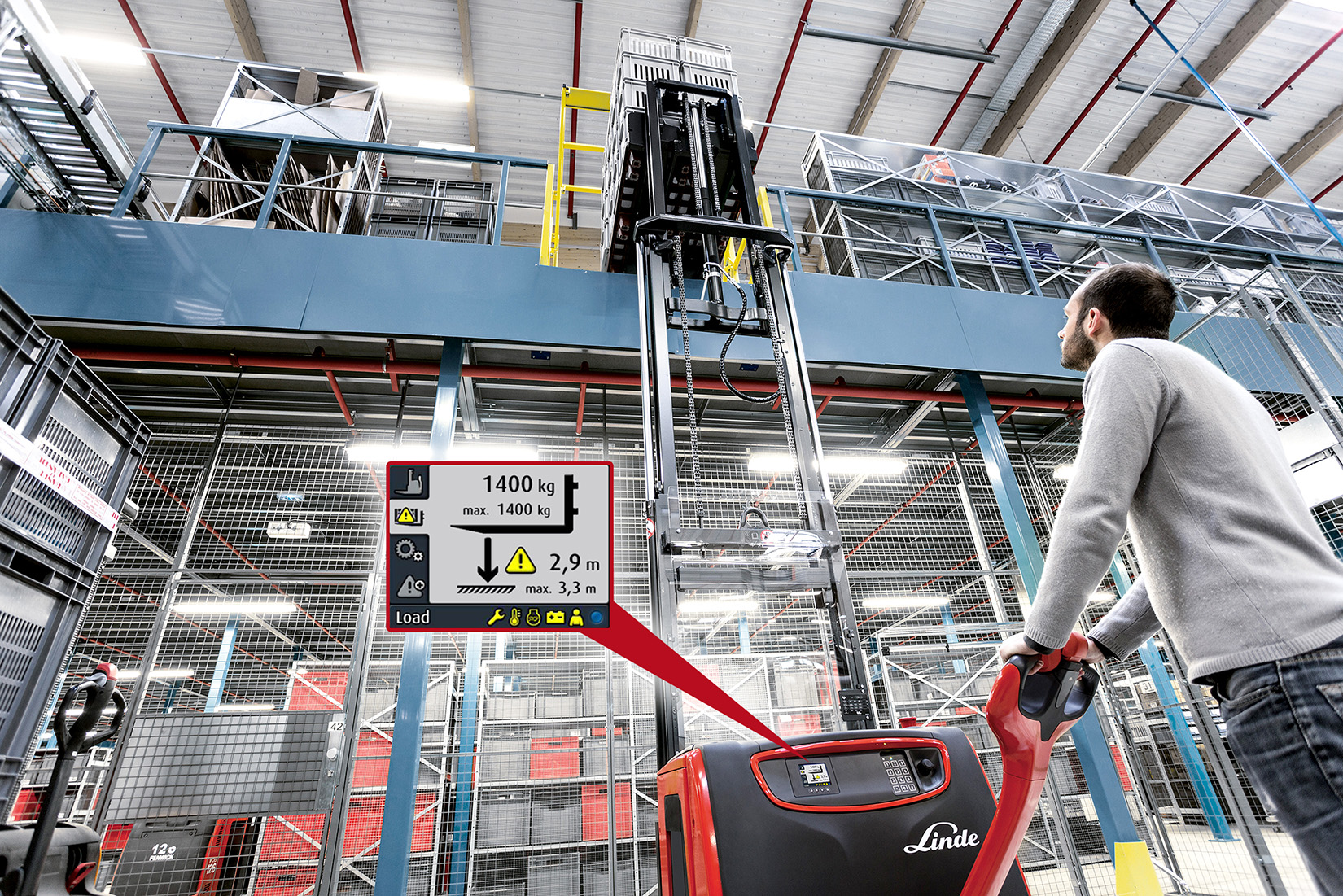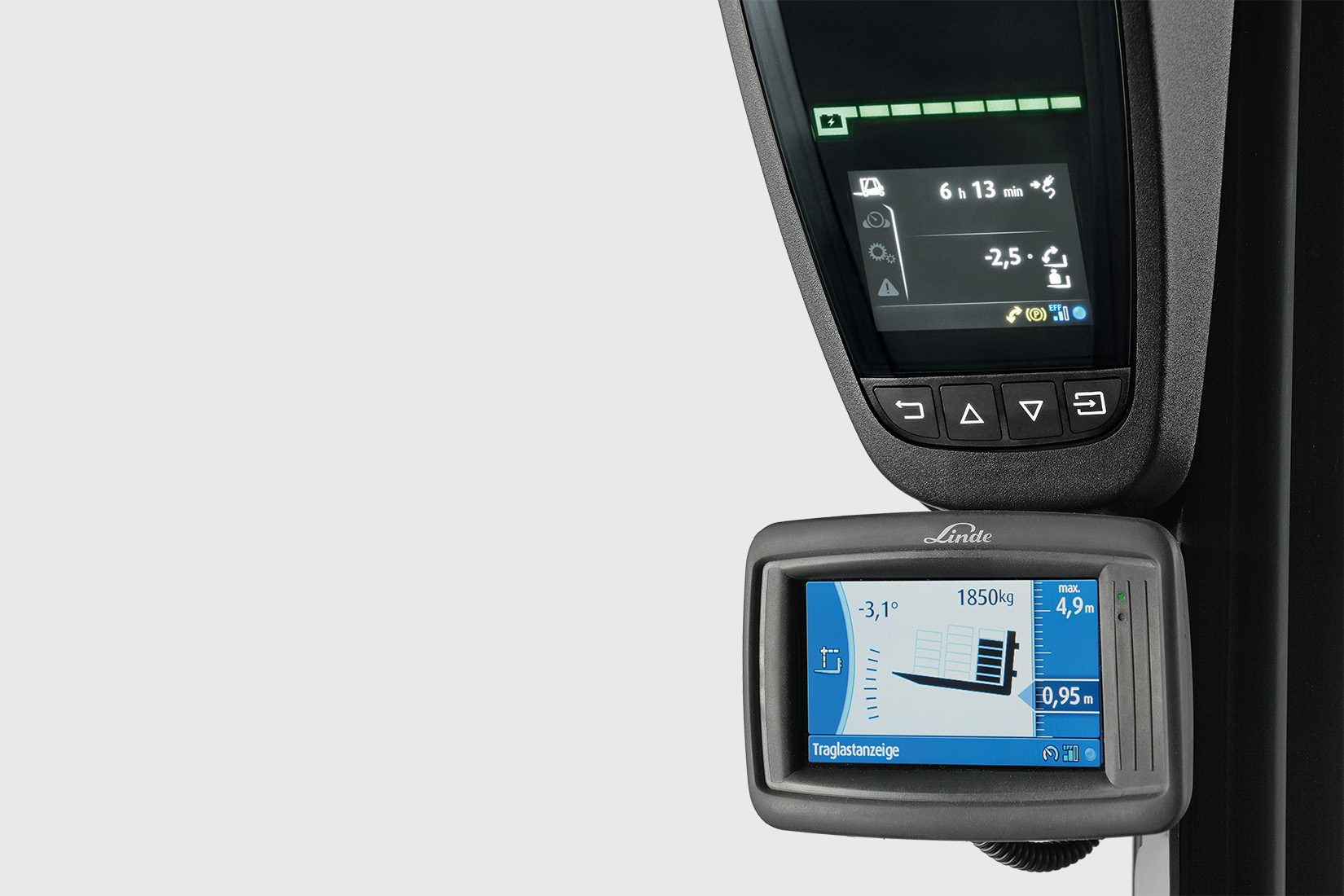Load Management



- for Linde stackers
The system prevents the risk of the residual capacity being incorrectly assessed by the truck driver by constantly showing the driver information about the current load weight, the remaining capacity and the maximum lifting height on a large colour display.
Visual and audible warnings when the maximum load capacity is almost reached, as well as an automatic deactivation function when the maximum load capacity is exceeded, further increase safety for the operator, the working environment and the load.





































